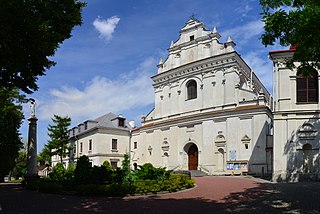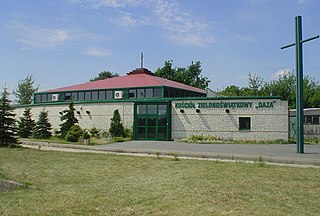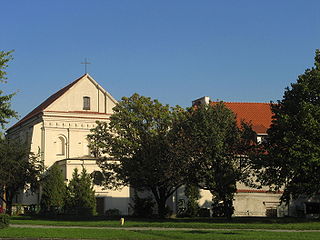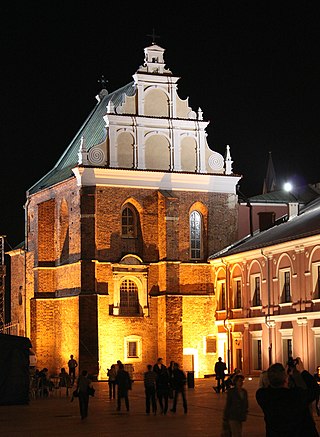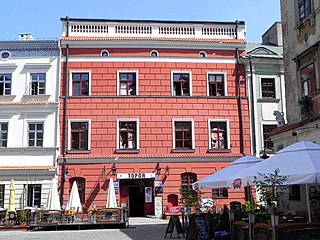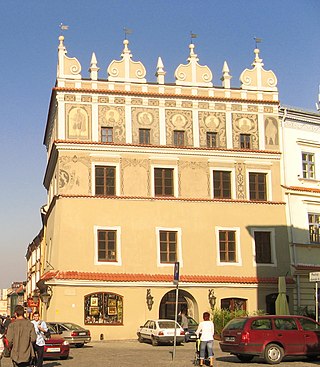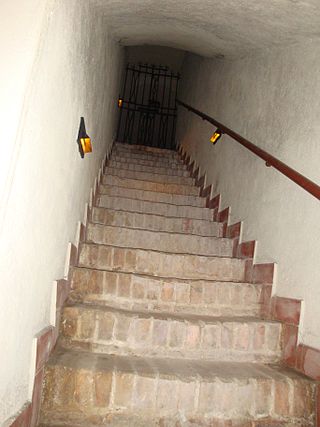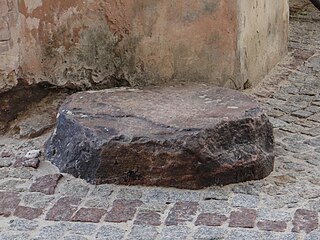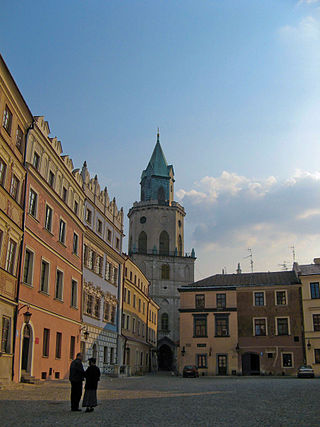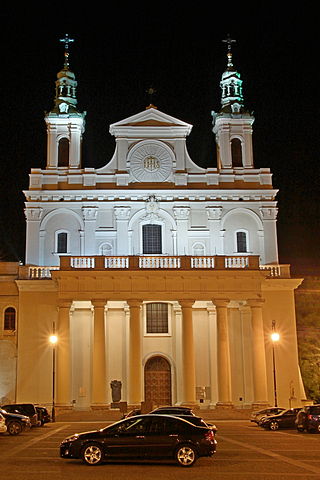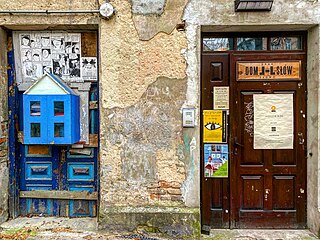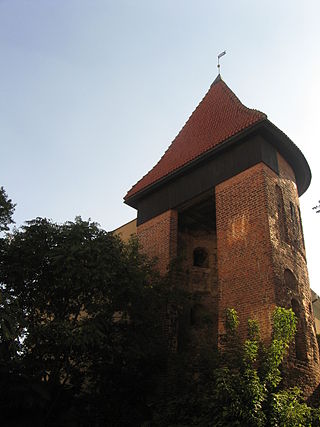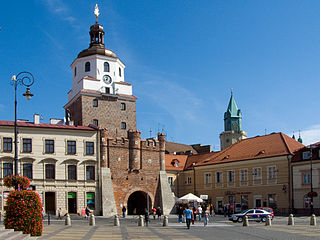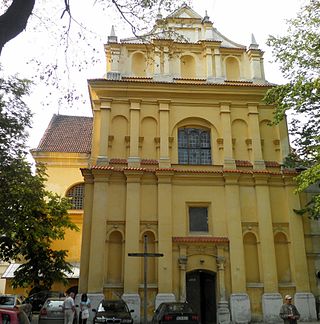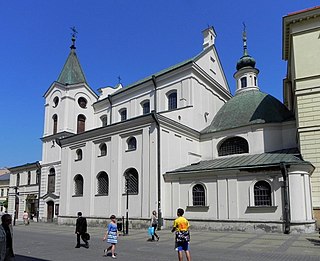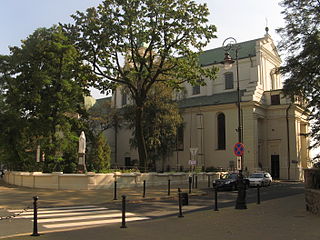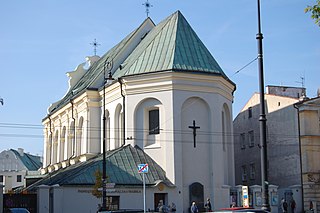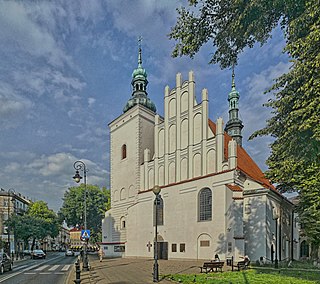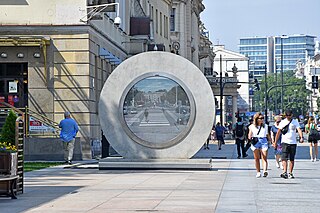Self-guided Sightseeing Tour #2 in Lublin, Poland
Legend
Guided Free Walking Tours
Book free guided walking tours in Lublin.
Guided Sightseeing Tours
Book guided sightseeing tours and activities in Lublin.
Tour Facts
7.1 km
163 m
Experience Lublin in Poland in a whole new way with our free self-guided sightseeing tour. This site not only offers you practical information and insider tips, but also a rich variety of activities and sights you shouldn't miss. Whether you love art and culture, want to explore historical sites or simply want to experience the vibrant atmosphere of a lively city - you'll find everything you need for your personal adventure here.
Activities in LublinIndividual Sights in LublinSight 1: Kościół pw. Świętej Agnieszki
Church of St. Agnes in Lublin – a Roman Catholic church built together with the Augustinian monastery in the years 1647-1667 in the Kalinowszczyzna, which was a separate jurisdiction, expanded after 1685, currently a parish church.
Sight 2: Kościół Zielonoświątkowy „Oaza”
The Pentecostal Church "Oaza" in Lublin – the largest evangelical church in Lublin, which is a Christian Protestant community of a Pentecostal character. It belongs to the eastern district of the Pentecostal Church in Poland.
Wikipedia: Zbór Kościoła Zielonoświątkowego „Oaza” w Lublinie (PL)
Sight 3: Dworek Wincentego Pola
Wincenty Pol's Manor House in Lublin – a biographical museum of Wincenty Pol located in a classicist manor house erected at the end of the 18th century on the premises of a small manor farm Firlejowszczyzna near Lublin.
Sight 4: Kościół pw. Matki Bożej Wspomożenia Wiernych
The Salesian Church of Our Lady Help of Christians in Lublin – the former monastery of the Franciscan Fathers. They came to Lublin in 1621. In the years 1635-1649, they erected a brick church in the Lublin Renaissance style dedicated to the Blessed Virgin Mary of the Angels and St. Francis on the site of the wooden church of St. Lawrence. The church was built on a swampy area, which is why it was built on wooden logs. The temple was repeatedly fired.
Wikipedia: Kościół Matki Bożej Wspomożenia Wiernych w Lublinie (PL), Website
Sight 5: Muzeum Narodowe w Lublinie
The National Museum in Lublin is one of the oldest and largest museums in Eastern Poland, located in Lublin. It was created in 1914, and received its own building in 1923.
Sight 6: Kaplica pw. Świętej Trójcy
The Chapel of the Holy Trinity, also known as Lublin Castle Chapel, is a Gothic chapel with a Renaissance gable located within the courtyard of Lublin Castle in Lublin, Poland. The chapel adjoins the museum of the castle complex and is an integral part of the site. It is known for its fifteenth-century frescoes in the Byzantine or Orthodox style, unusual for Catholic Poland.
Sight 7: The Grodzka Gate

The Grodzka Gate or the Jewish Gate – the city gate in Lublin, the remains of the first brick elements of the city's fortifications, built in 1342, after the permission of Casimir III the Great. The present monument has the shape given to it in 1785 by the court architect of King Stanisław August Poniatowski, Dominik Merlini.
Sight 8: Kościół pw. Świętego Wojciecha Biskupa i Męczennika
St. Adalbert's Church in Lublin – the hospital church of St. Adalbert is a rector's building. The brick, late-Renaissance church was built in the years 1610-1635. Renovated in 1756, then adapted into a warehouse in 1835, it was restored in the years 1923–1930. Further restoration works were carried out in 1970 and 1974.
Sight 9: Fundamenty Kościoła Farnego
Church of St. Michael the Archangel – a Roman Catholic parish church of St. Michael the Archangel in Lublin, one of the oldest temples in the city and the first Gothic church in Lublin. It was demolished in the mid-nineteenth century.
Wikipedia: Kościół św. Michała Archanioła w Lublinie (farny) (PL)
Sight 10: Kamienica Archidiakońska 7
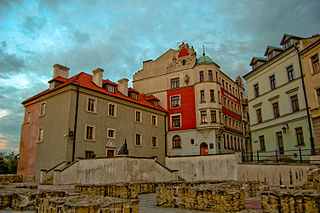
Mansionary house, mansionary or vicar house – a fifteenth-century monument in the complex of the former parish church of St. Michael in the Old Town in Lublin, at 9 Archidiakońska Street. Later, the building was rebuilt many times, before World War II it served, m.in others, as a tenement house. Currently, the entire apartment is an independent apartment.
Sight 11: Kościół pw. Świętego Stanisława Biskupa i Męczenika
The Basilica of St. Stanislaus the Martyr Bishop, also known as the Basilica of the Holy Cross Relics (Wood) or the Dominican Church – one of the oldest temples in Lublin, together with the monastery, is one of the longest existing institutions of this city.
Wikipedia: Bazylika św. Stanisława Biskupa Męczennika w Lublinie (PL), Url
Sight 12: Teatr Stary

The Old Theatre in Lublin - an impresario theater in Lublin opened in 1822. Initially it housed the Lublin Drama and Opera Stages, and in the 20th century also a cinema.
Sight 13: Muzeum Literackie imienia Józefa Czechowicza

The Józef Czechowicz Literary Museum is a branch of the National Museum in Lublin. The main purpose of the institution is to collect, store, process and make available manuscripts, exhibits, publications and scientific materials related to the life and work of Józef Czechowicz, as well as other writers from the Lublin region. It is located in the Old Town of Lublin.
Wikipedia: Muzeum Literackie im. Józefa Czechowicza w Lublinie (PL)
Sight 14: kamienica pod lwami
The House Under the Lions – also known as the Cholewin Tenement House, a Renaissance tenement house in Lublin, originally owned by Jerzy Organista. Its cornice is decorated with three lions carved in stone.
Sight 15: Piwnica pod Fortuną
Piwnica pod Fortuną – a room with historic polychromes in the Lubomelski tenement house at Rynek 8 in Lublin. Until February 2018, the complex of cellars under the tenement house was managed by the Lublin Regional Tourist Organization; since then, the place has been under the care of the Lublin Underground Route of the "Grodzka Gate – NN Theatre" Centre. The basement is a year-round facility, open every day. Admission is paid.
Sight 16: kamienica Chociszewska
Chociszewska Tenement House – a tenement house at the Lublin Market Square with number 6, which begins the so-called "Lubomelski side" of the Old Town. In 1524, its owner was councillor Adam Doydzwon, and then Barbara Skromowska. In this tenement house, fragments of late-Gothic window frames were discovered. After 1630, the tenement house became the property of the Chociszewski family, hence its name – Chociszewska.
Wikipedia: Kamienica Chociszewska w Lublinie (PL), Url, Url 0
Sight 17: Lubelska Trasa Podziemna
Lublin Underground Route – an approximately 300-meter tourist route running under the buildings of the Old Town in Lublin.
Sight 18: Głaz Katowski-Kamień Nieszczęścia
The Stone of Misfortune – a stone located in Lublin at the intersection of Prezydent Teodora Gruella and Jezuicka Streets. Legends about this stone say that touching it brings bad luck.
Sight 19: Wieża Trynitarska
Trinitarian Tower in Lublin – a neo-Gothic tower-belfry is the highest historic highway point in Lublin. From the viewing platform, at a height of 40 meters, there is a vast panorama of the city. The name of the tower comes from the Trinitarian Order, who stayed in the post-Jesuit monastery buildings located near the tower. Currently, it houses the Archdiocesan Museum.
Sight 20: Archikatedra Świętego Jana Chrzciciela i Świętego Jana Ewangelisty
The Cathedral of Saint John the Baptist or simply Lublin Cathedral in Lublin, Poland is the cathedral church of the Roman Catholic Archdiocese of Lublin.
Wikipedia: St. John the Baptist Cathedral, Lublin (EN), Website , Url, Heritage Website, Url 0, Url 1
Sight 21: Dom Słów- Izba Drukarstwa
The House of Words – museum of typography in Poland, is a multimodal education center. It familiarizes audience with poetry and art, old techniques of printing, and the history and achievements of Lublin printing industry.
Sight 22: Baszta Gotycka
The Gothic Tower, due to its shape, also known as the Semicircular Tower – a Gothic tower in Lublin. Reconstructed in the 80s of the twentieth century, which is, together with a fragment of the defensive walls, a testimony to the Gothic fortifications of the Old Town. The tower was built in 1341 together with defensive walls, made of stone and faced with bricks. Wooden platforms allowed defenders access to the embrasures. The shooting porches allowing access to the slit and key loopholes have not survived.
Sight 23: Muzeum Historii Miasta Lublina
The Museum of the History of the City of Lublin is a branch of the National Museum in Lublin. It is located in the building of the historic Krakowska Gate. It was established as the Historical Department in 1965. The permanent exhibition "History of the City" organized there presents the history of Lublin from the settlement period to 1944. The exhibits are located on four floors, around a spiral staircase. From the top floor, you can watch the panorama of the city in all directions.
Sight 24: Synagoga Chewra Nosim

The Chevra Nosim Synagogue in Lublin is a synagogue located in Lublin at 10 Lubartowska Street. In the years 1945–2006, it was the main synagogue of Lublin Jews.
Sight 25: Kościół pw. Niepokalanego Poczęcia Najświętszej Maryi Panny
The Rector Church of the Immaculate Conception of the Blessed Virgin Mary in Lublin – a rectory church formerly belonging to the Order of Discalced Carmelites, now to the Sisters of Charity.
Wikipedia: Kościół rektoralny Niepokalanego Poczęcia Najświętszej Maryi Panny w Lublinie (PL), Url
Sight 26: Kościół pw. Świętego Jozafata

Church of St. Josaphat in Lublin was built by Greek merchants in 1786 upon the consent of king Stanisław August Poniatowski. In the second half of the 19th century the temple which was originally dependent on the patriarch of Constantinople was taken over by the Russian Orthodox Church and in 1922 it became the property of the Roman Catholic Church. At present it is Saint Josaphat's church which until recently was also used by Greek Catholics.
Sight 27: Kościół pw. Świętego Ducha
The Church of the Holy Spirit in Lublin is a Roman Catholic church of the Holy Spirit in Lublin, in the Archdiocese of Lublin.
Wikipedia: Kościół Świętego Ducha w Lublinie (PL), Url, Url 0, Url 1
Sight 28: Kościół pw. Nawrócenia Świętego Pawła Apostoła
Bernardine Church of the Conversion of St. Paul in Lublin – a brick church, erected in the years 1470–1497, and then rebuilt after fires in the years 1557–1569 and 1602–1630. Subsequent renovations took place in 1762 and 1790; In 1827, the western gable was rebuilt and a porch was added. Subsequent renovations in the years 1850–1860, in 1903 the façade was rebuilt and the roof was lowered. The church was renovated several times, also in the twentieth century. It is located at 5 Bernardyńska Street.
Wikipedia: Kościół Nawrócenia św. Pawła w Lublinie (PL), Website
Sight 29: Kościół pw. Świętego Piotra Apostoła
The Church of St. Peter the Apostle in Lublin – a historic Roman Catholic church located in Lublin, built in the years 1636–1658. Until the fire in 1768, it bore the hallmarks of the Lublin Renaissance. In 1780, the reconstruction was completed, giving the church a Baroque style. The interior, covered in 1899 with neo-baroque polychrome by Władysław Barwicki, was also transformed. Since 1920, the church belonged to the Jesuits, who in November 2015 gave it to the Archdiocese of Lublin.
Sight 30: Kościół pw. Wniebowzięcia Najświętszej Maryi Panny Zwycięskiej
The Rector Church of the Assumption of the Blessed Virgin Mary Victorious or the Post-Visitation or Post-Bridgettine Church – one of the most valuable monuments of the Gothic and Renaissance in Lublin.
Wikipedia: Kościół Matki Bożej Zwycięskiej w Lublinie (PL), Website
Sight 31: Portal Wilno-Lublin
The Vilnius–Lublin Portal is a public attraction that videoconferences between separate outdoor structures in Vilnius, Lithuania, and Lublin, Poland.
Sight 32: The Church of Jesus Christ of Latter-day Saints
The Community of The Church of Jesus Christ of Latter-day Saints in Lublin is a Mormon community operating in Lublin, Poland, belonging to the Polish Warsaw district of The Church of Jesus Christ of Latter-day Saints.
Wikipedia: Gmina Kościoła Jezusa Chrystusa Świętych w Dniach Ostatnich w Lublinie (PL)
Share
How likely are you to recommend us?
Disclaimer Please be aware of your surroundings and do not enter private property. We are not liable for any damages that occur during the tours.
GPX-Download For navigation apps and GPS devices you can download the tour as a GPX file.
